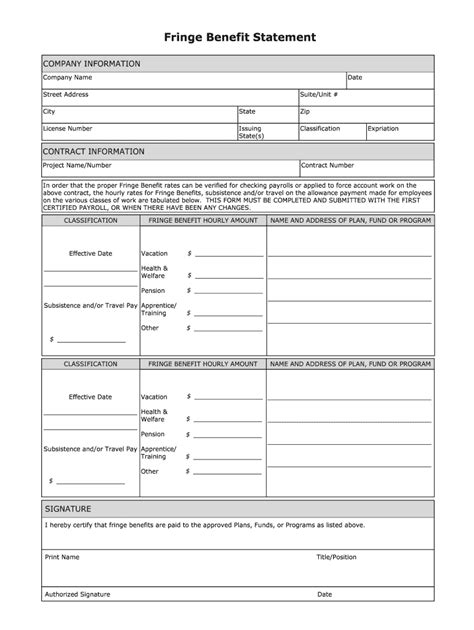Form, Benefits & Variations
Learn proper close grip lat pulldown form and the best alternatives and variations. The post Close-Grip Lat Pulldown: Form, Benefits & Variations appeared first on Legion Athletics.

The close-grip lat pulldown is a back exercise that primarily trains the latissimus dorsi, or “lats.”
You perform it on a lat pulldown machine using a V-bar attachment, which allows for a narrow hand position and neutral grip (palms facing each other). It’s highly effective for building back muscle and strength, easy to learn, and perfect for those with lower back issues.
In this expert guide, you’ll learn proper close-grip lat pulldown form, the benefits of the close-grip lat pulldown, common mistakes to avoid, the best variations and alternatives to incorporate into your workout routine, and more.
- How to Do the Close-Grip Lat Pulldown
- 1. Set up
- 2. Pull
- 3. Ascend
- Benefits of the Close-Grip Lat Pulldown
- Full Back Training
- Easy to Learn for Beginners
- Reduced Lower Back Stress
- Improved Posture
- Common Mistakes to Avoid in Close Grip Lat Pulldown
- Using Momentum
- Pulling Too Low
- Pulling with Your Biceps
- The Best Close-Grip Lat Pulldown Variations and Alternatives
- 1. One-Arm Lat Pulldown
- 2. Neutral-Grip Pullups
- 3. Lat Pulldown
- 4. Cable Row
- 5. One-Arm Dumbbell Row
- Muscles Worked By the Close-Grip Lat Pulldown
- Sets and Reps for the Close-Grip Lat Pulldown
- FAQ #1: What is the difference between wide and close-grip lat pull downs?
- FAQ #2: Which grip is best for the lat pulldown?
- FAQ #3: Will lat pull-downs help with my pull-ups?
Table of Contents
How to Do the Close-Grip Lat Pulldown
To perform the close-grip lat pulldown, follow these steps:
1. Set up
Attach a V-bar to the lat pulldown machine pulley, and select an appropriate weight that allows you to maintain proper form and range of motion throughout the exercise.
Sit on the lat pulldown machine seat and adjust the knee pad so that it locks your lower body in place, then slide your thighs out, stand up, and grab the V-bar with both hands.
While keeping your grip on the bar and your arms straight, sit down, allowing your body weight to pull the bar down with you. Nudge your thighs under the knee pads and plant your feet flat on the floor.
2. Pull
Sit with your chest proud and slightly arch your lower back to help engage your lats.
Without whipping your torso backward, pull the handle toward your chest until it’s underneath your chin (or touches your chest if you want to make the exercise harder). As you pull the bar down, squeeze your shoulder blades together and pull them down.
A good “cue” is to imagine pulling your elbows into the floor.
3. Ascend
Reverse the movement and return to the starting position. This mirrors what you did during the pull.
Here’s how it should look when you put it all together:
Benefits of the Close-Grip Lat Pulldown
Let’s explore some of the key advantages of the close-grip lat pulldown.
Full Back Training
The close-grip lat pulldown is an excellent exercise for training almost all the muscles of the back, including the lats, rhomboids, mid-traps, and rear deltoids.
Training these muscle groups simultaneously is ideal for gaining balanced size and strength on the back of your body.
It also trains the biceps, shoulders, forearms, triceps, pecs, and abs to a lesser degree.
Easy to Learn for Beginners
When most lifters think of “vertical pulling” exercises (exercises that involve pulling something from above your head toward your body), they think of pull ups and chin ups.
While these are excellent back exercises, they can be difficult for beginners or those who are overweight since they may not have the strength to perform a single rep.
The close-grip lat pulldown is a useful workaround because it works similar muscles but allows you to adjust the weight and gradually build strength.
Reduced Lower Back Stress
The close-grip pulldown minimizes the strain on the lower back, enhancing overall comfort during the exercise.
Unlike exercises such as bent-over rows, which stress your spine while bent over, the close-grip lat pulldown allows you to maintain an upright posture, reducing lower back discomfort.
Improved Posture
Strengthening your back muscles with exercises such as the close-grip pulldown helps to improve posture by strengthening the muscles that keep your shoulders back, preventing excessive upper back rounding.
Common Mistakes to Avoid in Close Grip Lat Pulldown
While the close-grip lat pulldown is an effective exercise, it’s crucial to be aware of common mistakes that can hinder your progress and increase the risk of injury. Here are some common mistakes to avoid:
Using Momentum
Generating momentum by “whipping” your upper body backward as you pull the weight lowers back engagement and shifts the emphasis onto other muscle groups, which is a bad thing if developing your back is your top priority.
Avoid this by keeping your back stationary, maintaining upper-body tightness, and core stability throughout the range of motion.
Pulling Too Low
Bringing the bar below your upper chest can strain your shoulder joint and reduce the exercise’s effectiveness. Stick to the correct range of motion, lowering the bar to beneath your chin or so that it touches your upper pecs. This engages your back muscles properly and prevents shoulder discomfort.
Pulling with Your Biceps
It’s easy to rely too much on your biceps instead of your back when performing the close-grip pulldown. However, doing so robs you of muscle and strength gain in the target muscles.
To minimize biceps engagement, imagine pulling your elbows into the floor. This maximizes how much your lats contribute while lessening biceps involvement.
The Best Close-Grip Lat Pulldown Variations and Alternatives
While the close-grip lat pulldown is an effective exercise, incorporating variations and alternatives can add variety to your workout routine and target the muscles of the back in different ways. Here are some of the best close-grip lat pulldown variations and alternatives:
1. One-Arm Lat Pulldown
The one-arm lat pulldown is a great variation that focuses on one side of the body at a time, helping you find and fix muscle imbalances.
To perform the one-arm lat pulldown, attach a D-handle to the top pulley of the lat pulldown machine. Grab the handle with one hand and pull it toward your chest, mimicking the motion of the traditional lat pulldown.
This exercise also engages the core muscles, particularly the obliques, as they help stabilize the body during the movement.
2. Neutral-Grip Pullups
Neutral-grip pullups are an excellent alternative to the close-grip lat pulldown, targeting the same muscles but without the need for a lat pulldown machine. You can perform this variation using a set of parallel bars or a neutral-grip pull-up bar.
3. Lat Pulldown
The regular lat pulldown trains your back similarly to the close-grip lat pulldown, though it may be slightly better at training the lats and less effective at targeting the rear delts.
4. Cable Row
The cable row is an excellent alternative to the close grip lat pulldown that involves using a neutral grip to pull a weight horizontally toward your midsection while keeping your elbows close to your sides. Similarly to the close-grip pulldown, the cable row trains your mid back to a high degree, especially your lats.
5. One-Arm Dumbbell Row
The one-arm dumbbell row is another great alternative to the close-grip lat pulldown, training all the muscles of the middle back, particularly the lats, traps, and rhomboids. To perform the exercise, hold a dumbbell in one hand, place the opposite knee and hand on a bench for support, and row the dumbbell to your side while keeping your back straight.
A significant advantage of the one-arm dumbbell row is that it requires little equipment, making it a useful alternative for those who don’t have access to a lat pulldown machine.
Muscles Worked By the Close-Grip Lat Pulldown
Here’s a diagram of the main muscles worked by the close grip lat pulldown:
Sets and Reps for the Close-Grip Lat Pulldown
The close-grip pulldown involves several major muscle groups simultaneously, so you can use heavier loads without compromising safety, provided you use good form.
Doing 3 sets of 4-to-6 or 6-to-8 reps works well for most men, whereas 3 sets of 6-to-8 or 8-to-10 reps is more fitting for women.
FAQ #1: What is the difference between wide and close-grip lat pull downs?
The wide-grip pulldown is a little better at training your lats, and the close-grip pulldown is marginally better at training your rear delts. The close-grip variation also trains the pecs and triceps more than the wide grip version, though neither is a “chest” or “triceps” exercise.
However, these differences are so minor that they likely have little effect on long-term muscle growth.
FAQ #2: Which grip is best for the lat pulldown?
There’s no such thing as the “best” grip for the lat pulldown. The best solution for most people is to periodically experiment with grip widths and orientations.
Doing so likely causes more balanced and complete growth than using just one or two grips, and it may help you avoid repetitive strain injuries, which can occur when you do the same exercise for long periods.
FAQ #3: Will lat pull-downs help with my pull-ups?
Yes, lat pulldown exercises can help improve your pull-up strength.
Lat pulldowns target the same muscles used in pull-ups, such as the lats and biceps. By strengthening these muscles through lat pulldown exercises, you can enhance your ability to perform pull-ups.
That said, strength is “specific.” In other words, the best way to get better at pull-ups is to do pull-ups.
The post Close-Grip Lat Pulldown: Form, Benefits & Variations appeared first on Legion Athletics.

 mainadmin
mainadmin 










